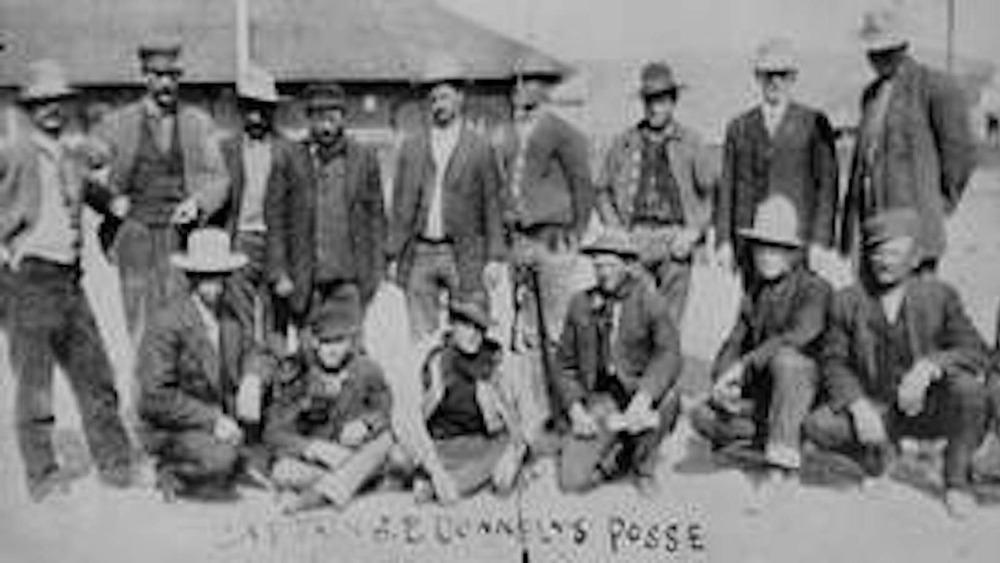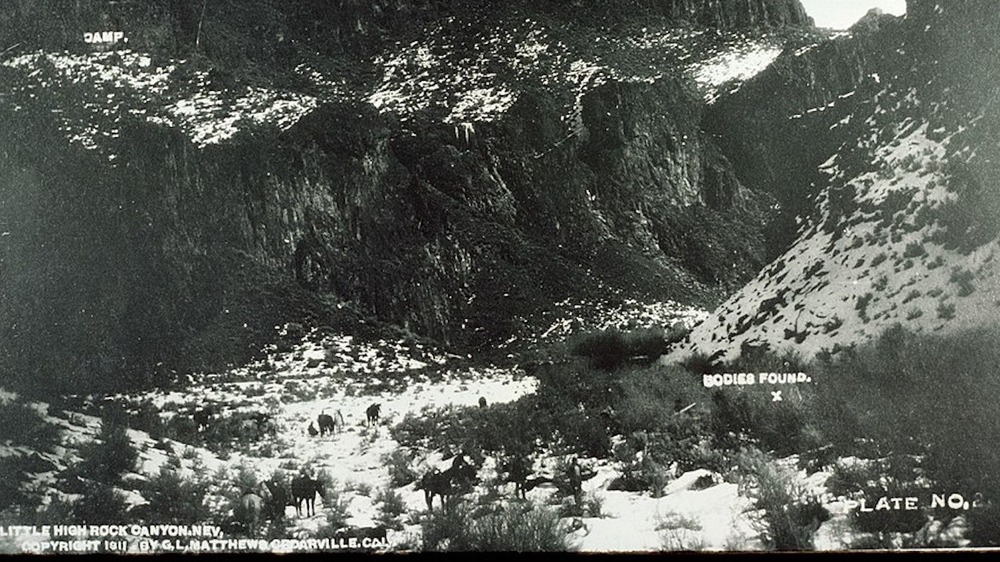The True Story Behind The Last Massacre
After years of ferocious battles, a turning point occurred in the history of American colonization and the wars with Indigenous peoples. In February of 1911, one of the last known clashes between Native Americans and United States forces — the Last Massacre, also known as the Battle of Kelley Creek — took place in Humboldt County, Nevada.
The story began with Native American "Shoshone Mike" Daggett and his family battling the harsh scarcity of winter in Little High Rock Canyon, Washoe County, Nevada. With nothing to eat, the group killed cattle for sustenance. But there was one big problem: the animals did not belong to them, per Howard Hickson's Histories. After four officers arrived at the canyon, the family believed they were close to being captured for their crimes. In fear of being caught for stealing the cows, the family murdered the officers and stole their clothing, an act of brutal violence that would serve as the catalyst for the Last Massacre.
The mutilated bodies of the four investigators prompted the Nevada State Police to embark on a hunt for the perpetrators of the crime. Amid panic on the region's ranches, the band of 11 fled through the Black Rock Mountains, across the Quinn River area, and finally at Kelley Creek, north of Golconda in southeastern Humboldt County, Nevada. Daggett and his family made up nine of the 11 fugitives.
The battle nearly wiped out the Native American family
The Native Americans did not appear to be planning an offensive. They were aware they were being trailed by law enforcement and began chanting and singing in preparation for death — a ceremony that was underway when gunshots marked the beginning of the end for the family.
The meeting of the four officers and the Native Americans led to a one-sided battle. Eight of the 12 members of the Daggett group were killed, while one member of the posse was wounded and died later of those injuries, according to Military Wikia. The only survivors from the family were a baby, a toddler, and a 10-year-old boy, and a 16-year-old girl. According to Collectors Weekly, the infant girl was the only survivor who lived to adulthood — the other three died of tuberculosis — and she eventually moved to Yakima, Washington and became a music teacher, according to a 1975 story from United Press International posted at Newspapers.com.
Per Rare Newspapers, the battle was initially perceived to be part of a broader Native American rebellion. But as more information about the event became clear, it was ultimately viewed for what it was: a family attempting to evade law enforcement.

